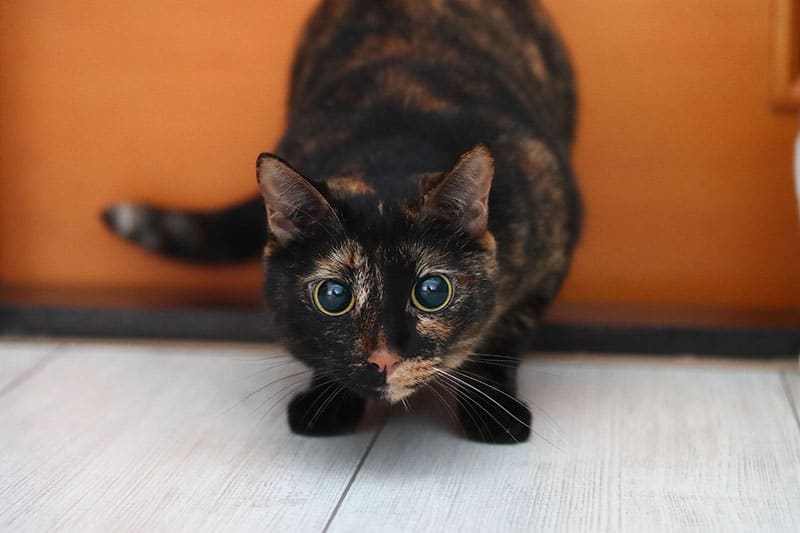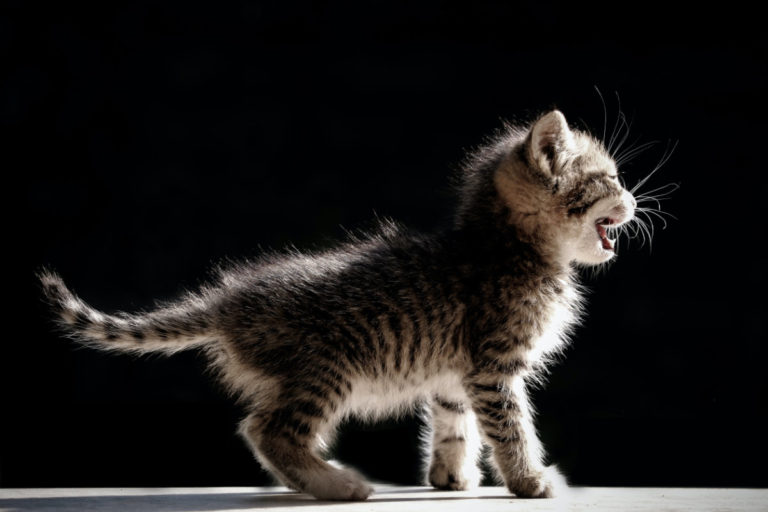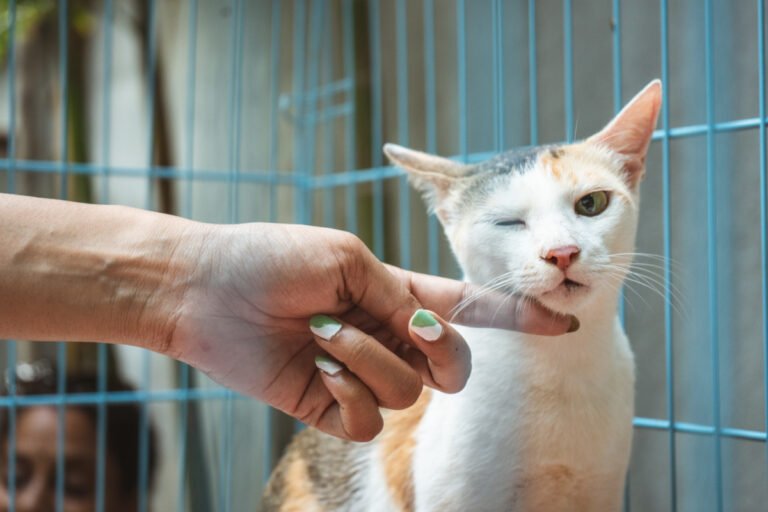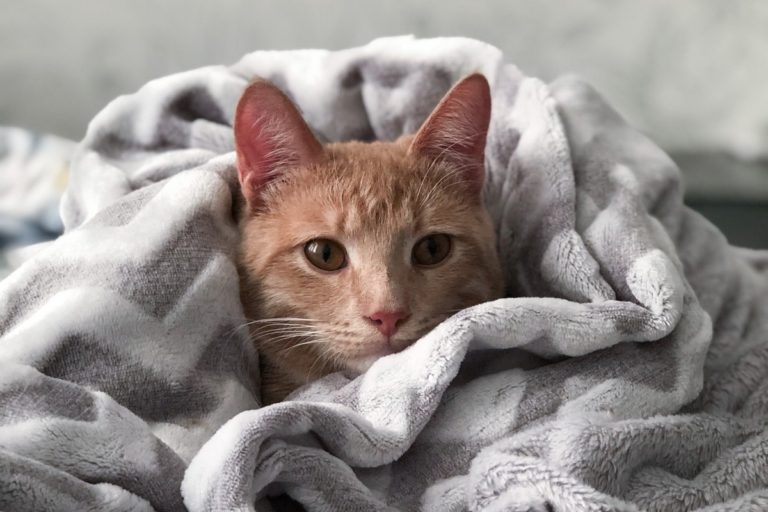We know a lot of cat owners are trying to figure out how many litter boxes they need for their cats. We want to help you out by providing some tips and tricks that will make your life easier when it comes to managing the number of litter boxes in your home. Specifically, how many litter boxes for 4 cats is ideal? We have a simple formula to calculate the answer.
DISCLAIMER: This post may contain affiliate links. If you click one of these links and decide to make a purchase, we may receive a small commission. This comes at no extra cost to you and helps to keep the site alive and up to date. If you want more information, please review our Privacy Policy. Thank you for your support!
How Many Litter Boxes Do I Need For 4 Cats?
When you live with multiple cats, it is key that you figure out their litter box situation fast. Or you will no doubt start to experience some litter box problems, like pooping on the floor or litter box guarding.
But how many litter boxes does it take for 4 cats?
In general, you want to have one litter box for each cat you have, and then one more. So for 4 cats you ideally need a minimum of 5 litter boxes.
Place at least one on each floor of your house and try to spread them out over equal distances. That way your cats will always have a litter box nearby, wherever they choose to chill.
A Litter Box For Every Personality
When it comes to the types of litter boxes you should get, my advice is to vary your selection. Different cats have different preferences. A mismatch between your cat and her litter box can have stinky consequences. Here are some tips on what type of litter box goes best with what type of cat personality.
Anxious Cats
An anxious cat is always on the lookout for threats. She likes to sit in the corner with her back to the wall, or hide away somewhere. In terms of her litter box, your scaredy cat needs to feel safe enough to do her business.
A covered litter box sounds like a good way to give her some privacy. But what if one of your other cats stalks and corners her? She won’t have anywhere to go.
Instead, go for an open litter pan about 1.5 times her size. That’s snug enough for her to feel protected and at the same time she can see any threats no matter where they come from.

Cats That Dig
Some cats like to dig excessively and end up leaving more litter next to the litter box than inside of it. If you have a feline archeologist in your house, add a litter box with a higher edge to the mix. Your kitty can still dig all she wants to, but the litter will stay where it belongs.
If you want to discourage your cat from digging so much, try putting less litter into her litter box. A layer of about 1 or 2 inches should do. This does mean that you will need to clean the litter box more often, but it’s a give and take.
Put a nicely sized litter mat underneath the box to catch any litter that does land next to the litter box. A cat litter mat also limits tracking, so you will find less litter crumbs around your house.
Cats That Spray
If you have a cat that sprays when she, or he, is in the litter box, you’re probably always looking for ways to make your own litter box experience better. Because spraying cats can leave a big mess!
Assuming that your sprayer doesn’t have any mobility issues or insecure tendencies, I suggest getting them a top-entry litter box. A top-entry litter box is a type of covered litter box that has an opening at the top. This ensures that all spray stays inside the litter box.
It’s a lot less work for you to just clean the litter box, and not your walls and floor. Just make sure you check the reviews before you make a purchase. Not all models are equally leak-proof.
Senior Cats
Cats are considered seniors when they are past the age of 11. In this stage of their life, many cats develop mobility issues, such as hip dysplasia or arthritis. As a result, your elderly cat might start to have trouble on the litter box as well.
Most litter boxes, even the front-entry ones, tend to have rather high rims. Obviously, this helps to keep the litter in the box, but might also keep your cat out.
Stepping over the high edge and onto the course litter is very painful for an arthritic cat. If one or more of your cats are getting older, swap out a few of your litter boxes with low entry ones. Of course, you can’t put too much litter into it, or it will all end up on the floor. Just add a light layer and clean out the litter box a bit more often.
Overweight Cats
When you pick out a litter box, also consider the size of your cats. If you have one that is overweight, or just a bigger breed, get a litter box that is bigger than the average. As a rule, your litter box should be 1.5 times the size of your cat.
This gives her enough room to get in, turn around and do her business. Any smaller and it will get too claustrophobic for her. Any bigger and it will make her feel anxious about a predator (or another cat) coming in.
A Cat Litter To Match
Just as their tastes in litter boxes vary, your cats may also prefer different litters.
Bigger litters, such as pressed wood pellets, are perfect in combination with a sifting litter box. But a senior cat with limited mobility, or a cat that has been declawed will not appreciate it as much.
Organic litters are great for cat owners who want to be more conscious of the environment, but some ingredients may cause allergic reactions in cats or humans. They also tend to attract more bugs, so that’s something to consider.
All things considered, most cats and cat guardians do best with the finer structure of a clumping clay litter. However, if your cat has a longer coat, tiny clumps might get stuck to her fur and end up in places where you don’t want them. In that case, a fine, non-clumping litter is the better choice.

More Tips On Litter Boxes For Multiple Cats
Self-Cleaning Litter Boxes
Taking care of 4 cats is a lot of work. Lend yourself a hand by investing in a self-cleaning litter box. These babies automatically take out the doo doo and the peed on litter for you. How cool is that?!
The poop and dirty litter gets collected in a closed compartment, out of your sight and smell. Of course, you do have to empty it out before it spills over. Depending on your budget and your cats’ habits, this could take days to weeks (according to manufacturers).
Just a step below fully automated litter boxes are sifting litter boxes. These have a double layered litter pan where the top layer acts like a sieve and filters the dirty bits from the clean ones. You just scoop up the poops and shake the pan every once in a while to aid in the sifting.
Disposable Liners
If you’d like to minimize your interaction with soiled litter, but don’t have the funds for a litter scooping robot, I can suggest using disposable litter box liners. You put these at the bottom of your litter pan and add a (thin) layer of litter on top. Then every few days you can simply chuck out the entire bag without ever picking up a scoop or shaking a box!
Location, Location, Location!
Besides the exact configuration of your litter boxes, where you place them is also important. For instance, it is best to put them against a wall, or in a corner, even. This way, your cats can keep an eye on their surroundings and feel more at ease.
Some cat guardians like to pile all their litter boxes in one room. I always advise against that. Not just for the enormous stink bomb that it creates, but also because you are essentially mixing your cats’ territories. Tensions might spark, and we want the litter box to be a place of peace (and pees).
If one or more of your cats have a habit of marking certain spots in your house, start out by putting a litter box in each of those locations. Once you get them to use it consistently, you can move it to a spot that is more convenient for you. Don’t move it too far at once, though! A few feet at a time is enough to not shock your cat and have her following the trail.
Other than that, make sure you spread the boxes out in such a way that your cats will always have one close, just in case they have to make a run for it. I can tell you from experience that this is a concern especially with older cats with digestive problems or chronic kidney disease. Sometimes they just don’t make it to the litter box.
Final Thoughts
Getting your cats’ litter box setup figured out brings you a long way towards a happy life with your felines. The first step on that journey is determining how many litter boxes you are going to put out. As we’ve explained, for 4 cats the golden number is 5. Consider each of your cats’ needs when picking out the boxes to maximize the chance that they will actually use them, add some litter mats to prevent tracking and make your own life easier, and you’re well on your way.








